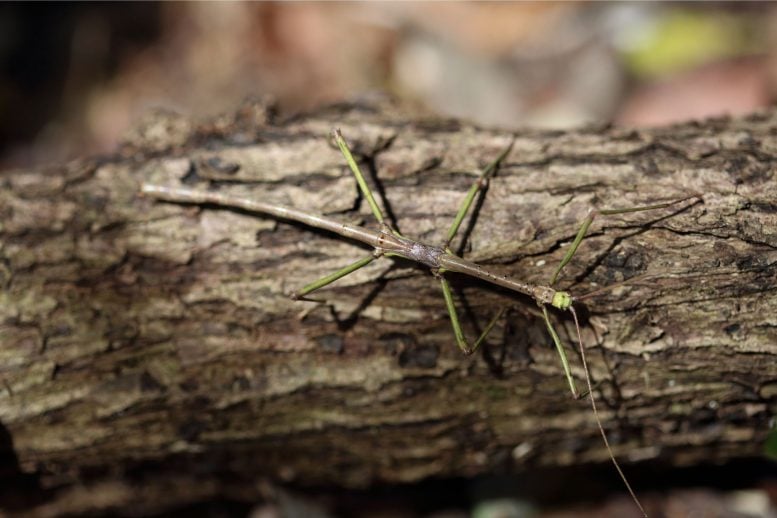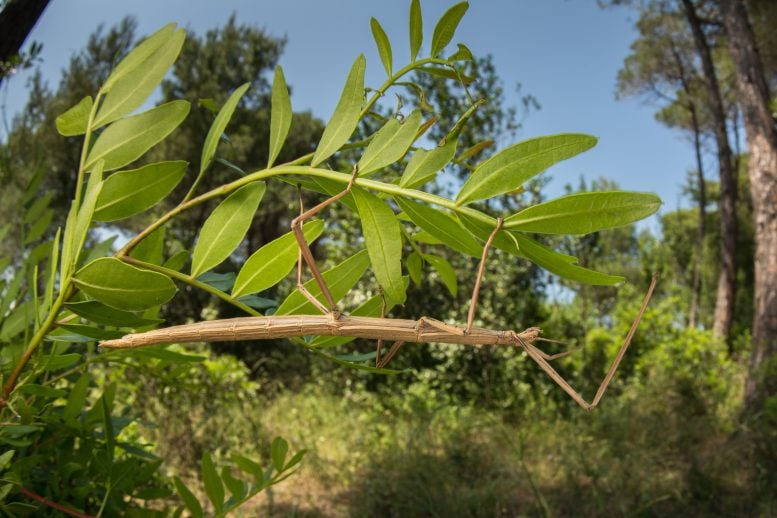
Recent research on stick insects demonstrates that genes linked to lost traits can be preserved over evolutionary timescales due to their multiple roles in biological processes, thereby allowing the potential re-emergence of these traits. This study sheds light on the complex genetics of trait preservation and re-emergence, highlighting broader implications for evolutionary biology.
Recent research shows that genes linked to traits lost in stick insects can be preserved, allowing their potential re-emergence over evolutionary time.
Traits can disappear during evolution if they become useless or too resource-intensive to maintain. It is generally believed that the genes associated with these traits will also deteriorate over time, potentially preventing their re-emergence. However, there are many examples in nature of once-lost traits reappearing in descendant lines.
According to Giobbe Forni, a researcher at the University of Bologna, “Mapping the presence and absence of traits on a
” data-gt-translate-attributes=”({“attribute”:”data-cmtooltip”, “format”:”html”})” tabindex=”0″ role=”link”>species The tree suggests that some traits may have been lost in lineages leading to extant species and then reinstated. The wings of stick insects are considered one of the most iconic examples of this evolutionary process.
This suggests that the genes associated with these traits could be conserved, perhaps for millions of years. However, research into the molecular basis of this re-emergence has been limited, meaning that the mechanisms responsible for the preservation of these genes remain largely speculative until now.
New perspectives from genetic studies
In a new study published in Genome biology and evolution, Forni and his colleagues shed light on another complex trait that has been lost in some stick insects: male production. Loss of the ability to produce males results in populations consisting only of females, which reproduce by parthenogenesis, a form of asexual reproduction. The study reveals that genes that are highly connected in regulatory networks and involved in multiple biological processes can be retained long after the loss of a trait, providing a potential pathway for the re-emergence of a trait over long scales of evolving times.

A stick bug.
In the new study, Forni and co-authors Barbara Mantovani, Alexander S. Mikheyev and Andrea Luchetti performed a comparative analysis of three species of stick insects in the genus Bacillus. While Bacillus grandii marettimi populations are made up of males and females who reproduce sexually, Bacillus atticus populations have lost the ability to produce males, only including females that reproduce through parthenogenesis. A third species, Red bacillus, includes both sexual populations and parthenogenetic populations that have lost the ability to produce males. By studying the fate of genes involved in male reproduction in these three species, the authors sought to study the extent to which genes are preserved after the loss of traits and the potential mechanisms behind this preservation.
Surprising discoveries about gene preservation
The researchers first identified networks of genes whose expression was correlated with male or female reproduction in the sexual species. B. seafarers then evaluated the same genes in B. atticus And B. redder. Surprisingly, male-related genes showed no signs of weakened selection or accelerated evolution compared to female-related genes in parthenogenetic species. Furthermore, male-related gene expression patterns were partially preserved in both parthenogenetic species.
Digging deeper, the researchers found that genes from female-related networks were primarily expressed in female reproductive tissues, while those from male-related networks were expressed in male reproductive tissues. And female reproductive tissues, including sexual and parthenogenetic females. This suggests that male-related genes may also play a role in female reproduction. The involvement of a gene in multiple biological processes is known as pleiotropy, and this phenomenon may explain the preservation of male-related genes in these parthenogenetic stick insects, as previously hypothesized.

Photograph of a stick insect. Credit: Filippo Castellucci
Additionally, the authors found that genes that were highly connected to many other genes in the network were more likely to be expressed in the reproductive tissues of parthenogens, suggesting that a gene’s network connectivity may also influence its preservation. after the loss of a trait. Taken together, these results indicate “that the once lost molecular blueprint of the male reproductive process may persist due to pleiotropic effects on other traits,” says Forni. “Different genes may undertake different preservation and degradation trajectories depending on the level of pleiotropy within the genetic regulatory network.”
This study not only sheds light on the persistence of genetic architecture after trait loss, but also offers potential insight into the emergence of rare males and cryptic sex (i.e., the episodic generation of males and sexual reproduction), which were observed in an increasing number of lineages that were thought to have long lost the ability to produce males. This opens up potential new avenues of research, with implications that could extend far beyond stick insects.
“It remains fundamental to examine on a larger scale the extent of genetic preservation after the loss of a trait. Although the Bacillus The species complex provides an interesting framework to address these questions, it would be useful to analyze a larger species complex where multiple transitions between reproductive strategies have occurred,” notes Forni. “While it is often necessary to rely on model species to discover and dissect biological processes, it is even more important to test our hypotheses in a broader context. This will only be possible if we devote more effort to observing and analyzing the incredible diversity of organisms and their complex adaptations.
Reference: “Parthenogenetic stick insects expose signatures of preservation in the molecular architecture of male reproduction” by Giobbe Forni, Barbara Mantovani, Alexander S Mikheyev and Andrea Luchetti, April 4, 2024, Genome biology and evolution.
DOI: 10.1093/live/evae073